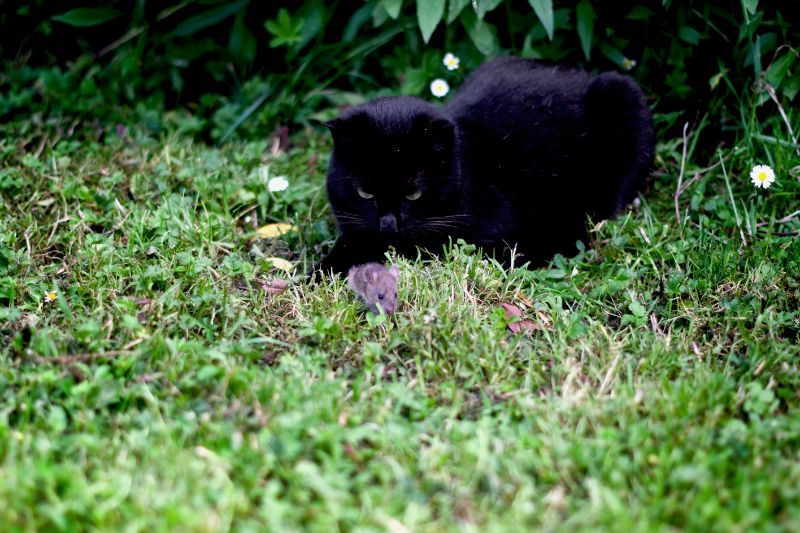Pet-Safe Pest Control: Is It Possible?

No one wants to share the yard, garden or house with uninvited guests. While insects and rodents may be fine from afar, the minute they cross our threshold or create problems in our yard, we humans usually decide to take charge.
For some, the easiest approach to pest control involves the use of chemical treatments. Pet owners, on the other hand, have the added responsibility of using pet-safe pest control methods, both inside and outside of the home.
Chemical Pest Control Dangers
Although the use of chemical pesticides is a common first choice, it’s important to know that the target insect or rodent is not the only living creature affected by the toxic chemicals, pellets or bait. Because our pets (and wild animals) are lower to the ground and explore their environment with their noses and mouths, they can easily be exposed to harmful pest control treatments that are not meant for them.
Preventing a pet poisoning is crucial all the time, but especially when pest control products are being used. Because chemicals can be picked up by a pet’s paws, hair, nose or tongue, they can poison a pet when applied to areas where the pet lives and plays. Rodenticides, such as bait and pellets, poison pets when found and eaten by causing internal bleeding, organ damage, neurologic symptoms, and, in worst cases, death.
Know the Signs
Symptoms of toxin poisoning range from mild to severe depending on the product and your pet’s level of exposure. Signs of toxin exposure include:
- Drooling
- Vomiting
- Diarrhea
- Nausea or decreased appetite
- Increased heart rate
- Breathing difficulties, coughing
- Hyperthermia
- Twitching or muscle spasms
- Disorientation
- Blood clotting
- Internal bleeding
- Bleeding from mouth or anus
- Anemia
- Seizures
- Death
Whether you know or suspect that your pet ingested a pesticide or rodenticide, these symptoms indicate a pet emergency. Please call us immediately or, if we are not open, the nearest pet ER. If you know or think you know what your pet was exposed to, please bring in the original container, so we can see what it is and the chemicals it contained.
Options for Pet-Safe Pest Control
Fortunately, there are many pet-safe pest control options that go a long way toward managing or eliminating insects or rodents. Do your homework and consider the pros and cons – as well as your pet’s living environment – for any product you are considering.
What to Look For
When purchasing a pet-safe pest control product, be sure that the label clearly states that it’s safe to use around people, pets and plants. Look for products that are made in the USA and FDA approved.
Despite meeting safety standards, you should only apply these products when your pet is not in or near the area and will not be able to access the area until after any wet or sprayed areas are completely dry (usually an hour or 2). Sample a small area before applying the product to the entire yard or garden. Always follow the product directions.
We strongly advise that you do not use pellets or other edible rodent bait anywhere around your home, as they are just too risky around pets. Even secondary exposure to a rodent that has eaten bait poses a risk to pets. Since these kinds of rodenticides can take two to three days to kill a rodent, they are also not humane. There are many types of rodent traps that can be placed out of a pet’s reach that also provide a more humane and immediate method of extermination.
A Word About Flea and Tick Preventives
When administered incorrectly, pets can also get sick from over-the-counter topical, spray-on or collar-treated flea and tick preventives. It is important that pet owners follow our recommendations for using these preventives, in order to prevent accidental poisoning.
Meeting a High Bar
Pet-safe pest control products are not only available, but they can be quite effective. If you have further questions about your pet’s health and safety, we’re here for you and your pet at Lone Tree Veterinary Medical Center.



